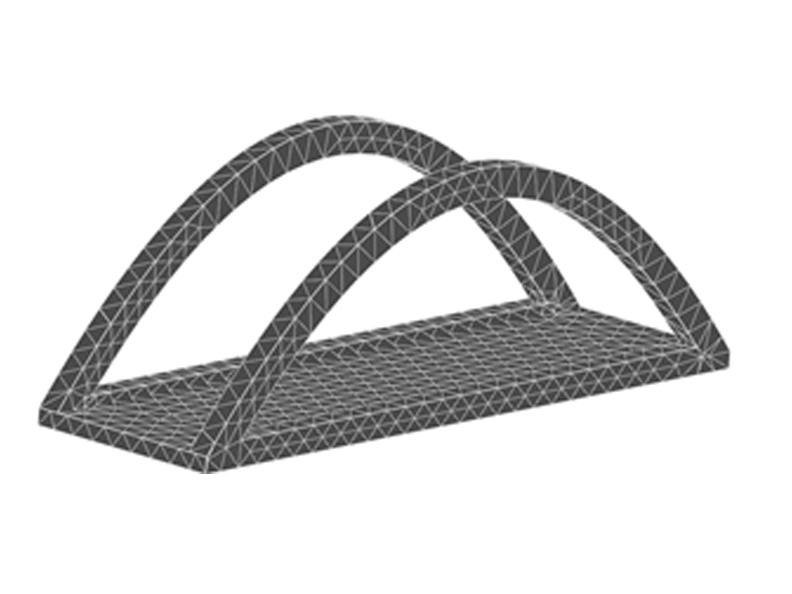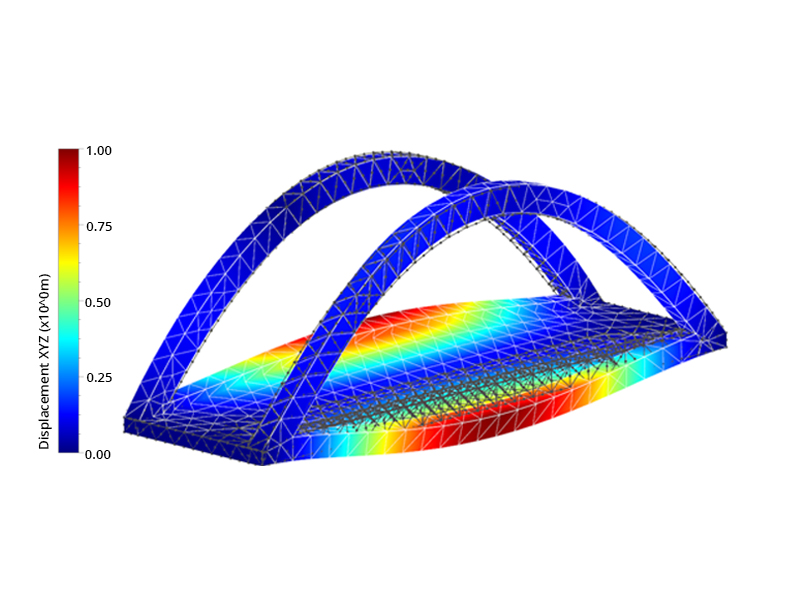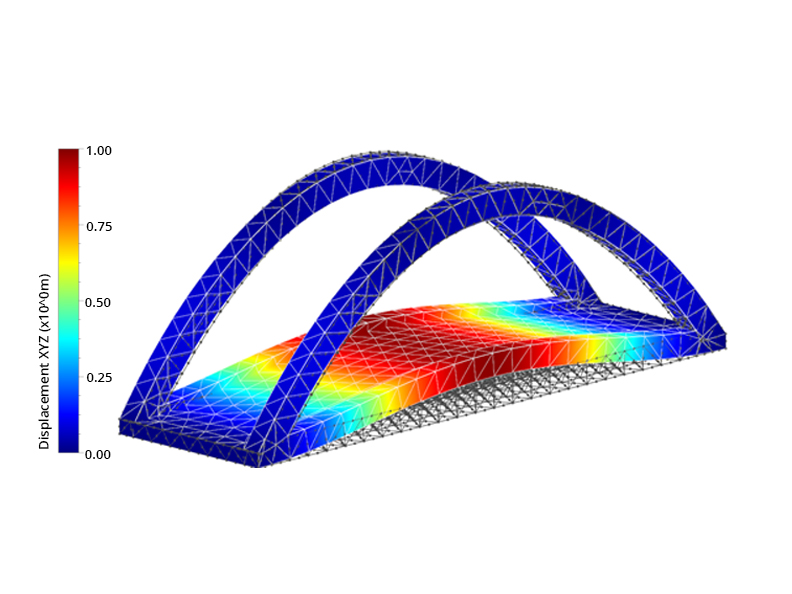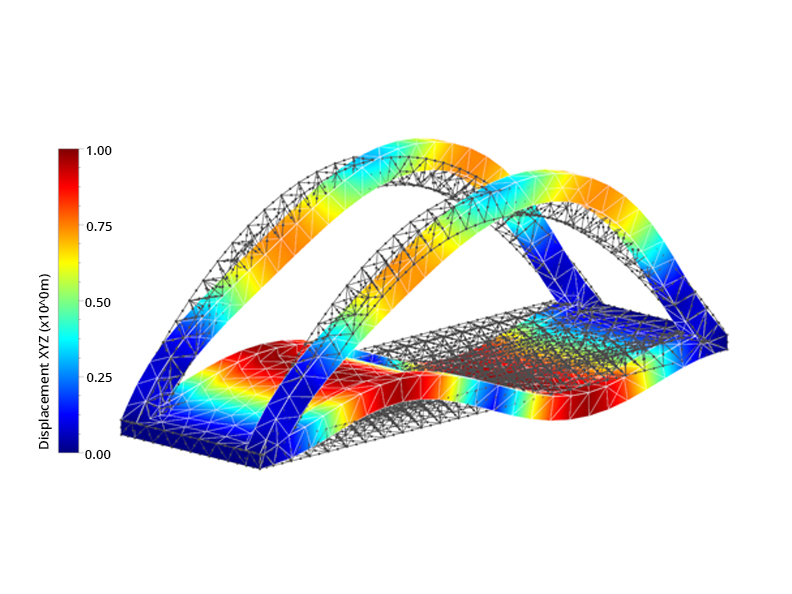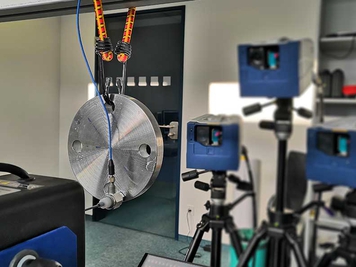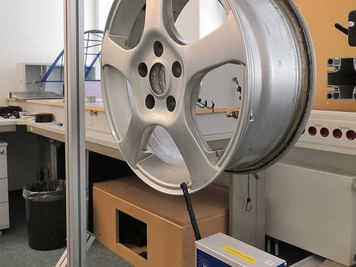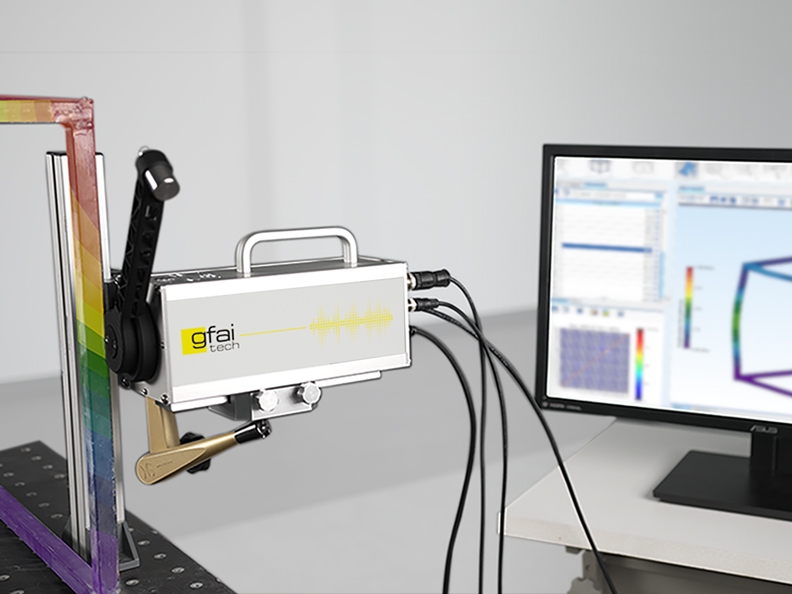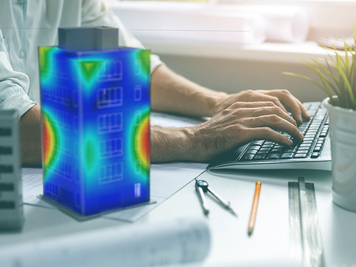The FE simulation resulted in the numerically determined values listed in Table 2 for the first three natural frequencies. The simulation of the corresponding mode shapes is shown in Figures 2-1 up to 2-3.
The calculation provides the modal parameters of the steel bridge structure, which are very important in the development and design phase, for example, to prevent failure of the structure under dynamic excitation. This type of structure is constantly exposed to environmental forces (traffic, wind, earthquakes) that can cause undesirable and damaging vibrations of the structure. To simulate the dynamic loading, the expected dynamic excitation forces are applied to the model in order to avoid resonance-like vibrations.
In addition to simulation, our specialists also perform Experimental Modal Analyses, with applications ranging from individual components such as impeller blades to entire structures.

